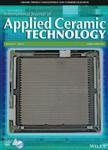版权所有:内蒙古大学图书馆 技术提供:维普资讯• 智图
内蒙古自治区呼和浩特市赛罕区大学西街235号 邮编: 010021

作者机构:Acad Army Armored Forces Dept Equipment Maintenance & Remfg Engn Beijing 100072 Peoples R China
出 版 物:《INTERNATIONAL JOURNAL OF APPLIED CERAMIC TECHNOLOGY》 (国际应用陶瓷技术杂志)
年 卷 期:2023年第20卷第2期
页 面:1310-1326页
核心收录:
学科分类:08[工学] 0805[工学-材料科学与工程(可授工学、理学学位)] 080502[工学-材料学]
基 金:National Basic Product Innovation Research Project of China
主 题:C C-SiC friction third-body layer tribological behavior wear mechanism
摘 要:C/C-SiC composites are promising candidates for heavy-duty tracked vehicle brake discs. A third-body layer (TBL) can be formed on the surface of C/C-SiC self-mated brake discs, which has an important impact on tribological behavior and wear mechanism of brake discs. Herein, the formation conditions and evolution process of TBL and its effect on friction and wear properties were investigated. An appropriate braking pressure and speed (P and V) are beneficial to the cutting of asperities and refinement of wear debris on the contact surface, which are preconditions for the formation of original TBL. The original TBL can be formed under the P center dot V of 12, 15, and 16, which effectively improve braking stability and reduce the wear rate. During the continuous braking process, the original TBL undergoes growth, stabilization, destruction, and regeneration. Under the frictional heat and compressive stress, wear debris gradually evolves into a uniform and dense TBL. The average coefficient of friction and wear rate reach to the lowest value of .446 and 38.5 x 10(-3) cm(3)/MJ, respectively. A continuous high temperature in the later stages of braking leads to severe oxidative wear. The newly formed TBL covers the original surface to form a multilayered structure, indicating the TBL undergoes destruction and regeneration.